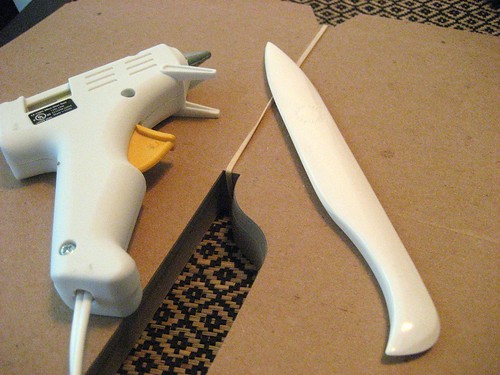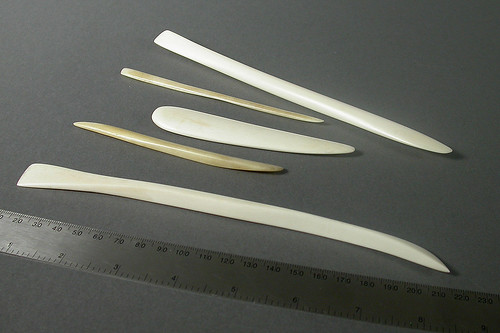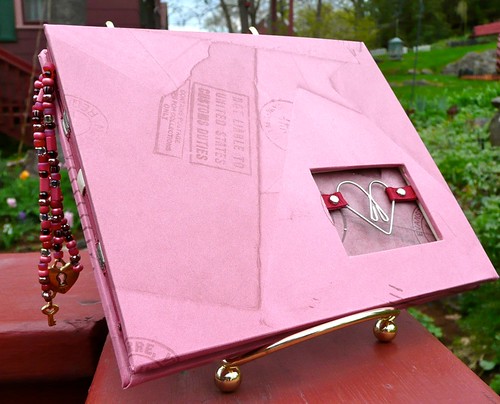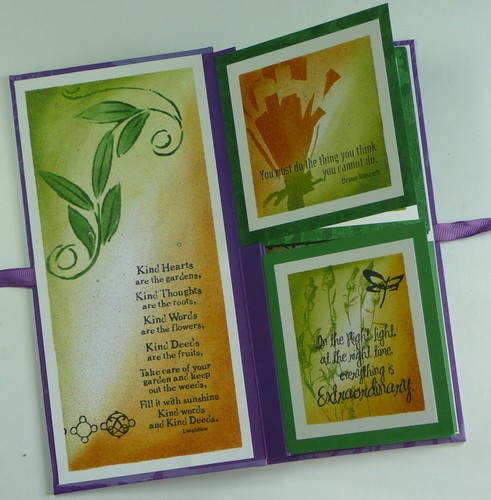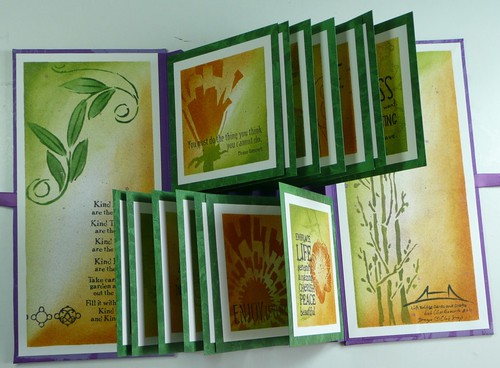Every so often, I like to share some details about the tools I use in my papercrafting projects. Today's topic is the bone folder. You've seen me use this when I wrap book board - scoring the paper before folding over the edges gives a nice crisp corner. Scoring the paper helps break down the paper fibers just enough so that the fold is easier and cleaner.
I also use this to tuck the corners to make nice, neat, corners when I wrap my book board.
After you fold the paper, the bone folder is really useful for burnishing the paper onto the book board. The extra pressure from the bone folder helps the glue to make a great bond with the board. It's also useful for reinforcing the crease on a card. It makes a big difference in making your project look crisp and finished.
I like to have several different sizes and shapes of bone folders. They're handing for getting paper into small corners if you're making a box, and the different shapes can help with different projects. This is a cool shaped one I found online:
A common misunderstanding about bone folders is that they're not all made from bone. If you're not into using animal products in your crafting, there are many plastic varieties available. In fact, one of my favorite bone folders is made from teflon. A teflon folder is great when you're using specialty papers, because it doesn't tend to "stick" to the paper as much or leave a mark behind. I've also seen bone folders made from wood - search
etsy.com.
While listening to some bookbinding podcasts (I like
Book Artists and Poets in particular), I found a great podcast (
iTunes link) about
Jim Croft who makes bone folders from elk and deer and teaches how to do this as well. I found this great picture of a student's work in class online:
So, bone folders are handy for folding paper, burnishing creased or glued paper, and for tucking corners in on books or boxes. They come in a variety of shapes, sizes, and materials, so you can never have too many of them. You can even make your own! What do you love about bone folders? Do you have any other tips? Share them in the comments!











